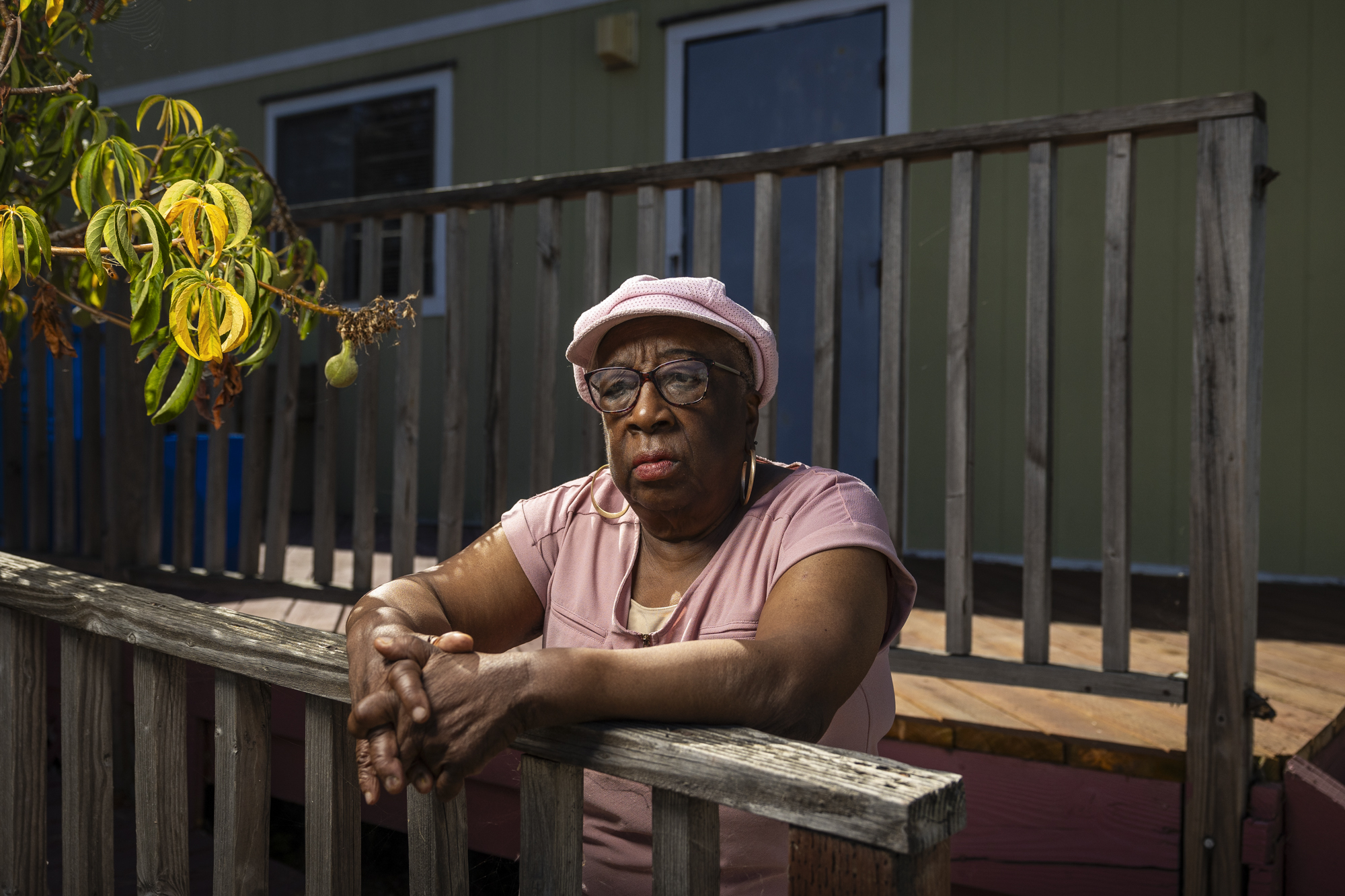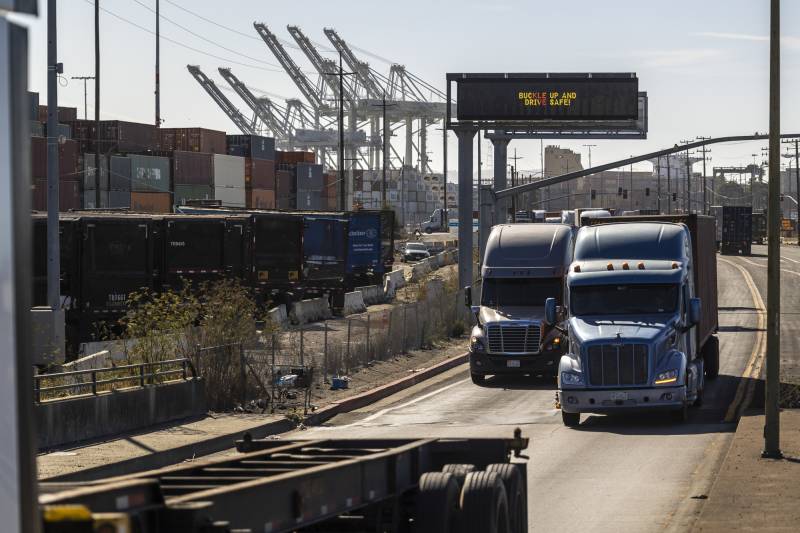Oakland’s Port Commission on Thursday gave the sign-off for a construction aggregate company to build an open-air sand and gravel facility at the Port of Oakland. That move marks the last step in finalizing a settlement with the Port and the West Oakland Environmental Indicators Project. The environmental group sued to stop the project in March 2022 on the grounds that it would “expose an entire new generation of West Oaklanders to increased air pollution.”
The settlement requires the developer to put in place watering and monitoring protocols to reduce dust from aggregate stockpiles. They also must use vessels that are powered by the grid and connected to the shore, when they are docked, instead of burning heavy diesel fuel.
“They were talking about electric trucks, but that was as far as they wanted to go. So now they’re going further,” said Margaret Gordon, co-director of the West Oakland Environmental Indicators Project. “We didn’t get everything, but we got enough to say there’s a change coming.”

The lease agreement allows Eagle Rock Aggregates to build and run a Port terminal for importing, storing and distributing sand and gravel. Under the project estimates, trucks would take 70,000 trips annually to carry the material, and the facility could store as much as 2.5 million tons of sand and gravel each year.
In a statement, Eagle Rock President Scott Dryden said he is “excited to continue serving the Bay Area and to solidify the collaborative relationship with our neighbors in West Oakland.”
Bryan Brandes, the director of maritime for the Port of Oakland, said he was pleased with the outcome and appreciates the push from the community for lower emissions and clean air. He said he understands residents’ concerns, and the Port has reduced emissions significantly over the last decade.
“The Port is a much cleaner area than it was ten, fifteen years ago,” Brandes said. “We’re going to continue to drive down to zero emissions.”
He said construction material from the project will also help the city of Oakland meet its housing development goals while boosting revenue for the Port.
The environmentalists argued in their lawsuit that the project put residents at risk by storing construction aggregates in stockpiles as high as 25 feet, holding as much as 329,000 tons each, “with no covering to block wind or rain, allowing dust and particulates to blow off the site or run off the piles.”
“They would not cover the material that would blow out the port area, but we did get them to develop a plan to water it down so the particulates will not be generated through the port area,” Gordon said.

